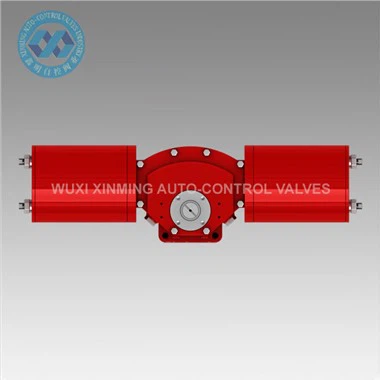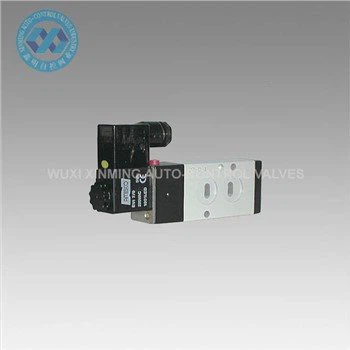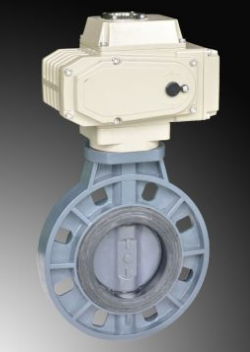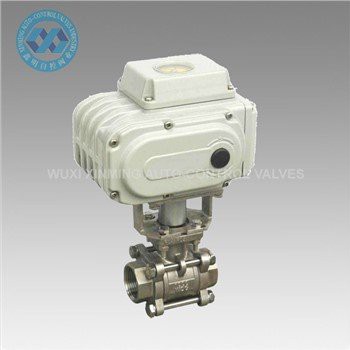Introduction
In heating, ventilation, and air conditioning (HVAC) systems, precise control of air and water flow is essential for maintaining comfort, energy efficiency, and indoor air quality.
A pneumatic actuator for HVAC valves is a proven solution for automating valve operation using compressed air instead of electricity.
These actuators provide reliable, cost-effective, and safe control in both commercial and industrial HVAC applications.
1. What Is a Pneumatic Actuator for HVAC Valves?
A pneumatic actuator is a device that converts air pressure into mechanical motion to operate HVAC control valves.
These valves manage the flow of hot water, chilled water, steam, or air in a building’s climate control system. By integrating with a building automation system (BAS), pneumatic actuators allow:
-
Automatic temperature regulation
-
Precise air volume control
-
Energy-efficient HVAC performance
2. How Pneumatic Actuators Work in HVAC Systems
-
Signal Input – A thermostat or BAS sends an air pressure signal to the actuator.
-
Air Pressure Conversion – The actuator converts the signal into linear or rotary motion.
-
Valve Movement – The actuator adjusts the valve position to regulate fluid or airflow.
-
System Feedback – Optional positioners provide real-time valve position data.
3. Types of Pneumatic Actuators for HVAC Valves
3.1 Diaphragm Actuators
-
Common in HVAC due to smooth control and low air consumption.
-
Ideal for modulating control valves.
3.2 Piston Actuators
-
Provide higher force for large or high-pressure HVAC valves.
3.3 Rotary Pneumatic Actuators
-
Used for butterfly or ball valves in large air handling units or chilled water systems.
4. Advantages of Using Pneumatic Actuators in HVAC
-
Energy Savings – Efficient modulation reduces heating and cooling costs.
-
Durability – Operate reliably in dusty, humid, or high-temperature environments.
-
Safety – No electrical sparks, making them suitable for hazardous areas.
-
Low Maintenance – Fewer moving parts compared to electric actuators.
-
Compatibility – Integrates easily with legacy pneumatic control systems.
5. Common Applications in HVAC Systems
-
Air Handling Units (AHUs) – Regulating chilled water or hot water valves.
-
VAV (Variable Air Volume) Systems – Adjusting airflow in different building zones.
-
Fan Coil Units (FCUs) – Controlling small water valves for localized heating/cooling.
-
Steam Heating Systems – Modulating steam flow for temperature control.
-
Cooling Towers – Managing water flow and temperature balance.
6. Selection Criteria for HVAC Pneumatic Actuators
When choosing a pneumatic actuator for HVAC valves, consider:
-
Valve Size and Type – Match actuator torque or thrust to the valve requirement.
-
Air Supply Pressure – Ensure compatibility with existing pneumatic systems (usually 3–15 psi signal range).
-
Control Function – On/off or modulating control.
-
Fail-Safe Position – Spring-return actuators can move valves to a default position during power or air supply loss.
-
Environmental Conditions – Resistance to moisture, dust, and temperature variations.
7. Maintenance Tips
-
Regular Air Line Inspection – Prevent leaks and maintain stable pressure.
-
Clean Filters and Regulators – Ensure debris-free air supply.
-
Check Calibration – Verify actuator travel matches valve position requirements.
-
Lubricate Moving Parts – Only if recommended by the manufacturer.
Conclusion
A pneumatic actuator for HVAC valves is a reliable, efficient, and safe choice for automating valve operation in heating, cooling, and ventilation systems.
With the ability to deliver precise control, integrate with existing pneumatic infrastructure, and operate in challenging environments, these actuators remain a trusted solution in modern and legacy HVAC applications.
If you want to learn more about low-priced products, please visit the following website: www.xm-valveactuator.com















